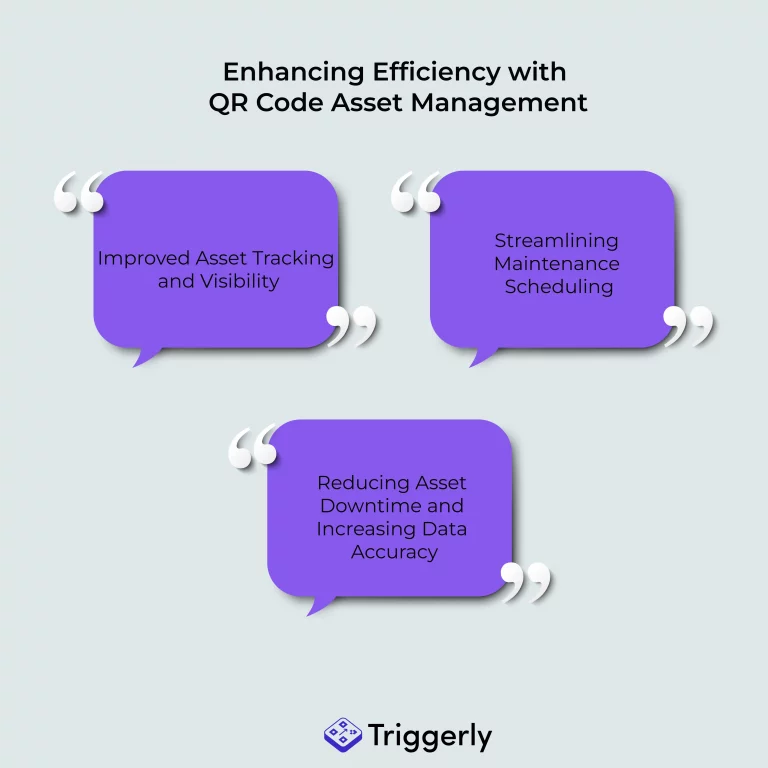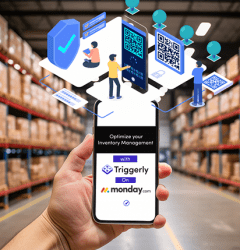
Using QR Codes for Asset Management
1. Understanding QR Codes for Asset Tracking
QR codes have revolutionized the way businesses manage their assets. These codes provide a quick, convenient, and cost-effective solution for tracking assets, improving efficiency, and enhancing accuracy. In this article, we will explore the benefits of using QR codes for asset tracking, how they revolutionize asset management, and how to implement QR code asset tracking systems.
Benefits of QR Codes for Asset Tracking
QR codes offer numerous advantages over other tagging options such as barcodes and RFID technology. Some of the benefits of using QR codes for asset tracking include:
Storing up to 2500 numerical characters of data, allowing for detailed asset information.
- Using smartphones to obtain data, making it easily accessible to anyone with a mobile device.
- Being easy to read by a scanner even when damaged, ensuring accurate scans even in challenging conditions.
- Requiring minimal staff training, reducing the time and resources needed for implementation.
- Being used for a variety of data storage scenarios, making them versatile for various asset management needs.
How QR Codes Revolutionize Asset Management
QR codes provide an efficient and effective way to track assets. They offer faster asset tracking speeds, saving time and increasing productivity. With QR codes, identification and tracking of assets become streamlined, reducing costs and improving operational efficiency. QR codes also enable better asset visibility, allowing businesses to track a larger number of assets accurately.
Implementing QR Code Asset Tracking Systems
To implement QR code asset tracking systems, businesses need to follow a simple three-stage process:
- Information is stored on a unique QR code that is printed and assigned to an asset.
- The QR code is scanned by a mobile device, retrieving the asset information.
- This data is transmitted to a computer in binary form, where it is decoded to provide detailed asset information.
2. Enhancing Efficiency with QR Code Asset Management:

QR codes enhance efficiency in asset management by improving asset tracking, streamlining maintenance scheduling, and reducing asset downtime and data inaccuracy.
Improved Asset Tracking and Visibility
QR codes enable faster and more accurate asset tracking. By scanning the codes, asset managers can quickly access detailed asset information such as location, date of manufacture, and asset identification number. This eliminates the need for manual tracking methods and reduces the risk of human error.
Additionally, QR codes increase asset visibility by allowing businesses to track a larger number of assets effectively.
Streamlining Maintenance Scheduling
QR codes can be linked to an asset’s maintenance history or current issues stored in an asset tracking system. This enables asset managers to schedule upcoming maintenance more efficiently, based on data-driven decisions. By implementing preventive maintenance schedules, businesses can reduce downtime and ensure optimal asset performance.
Reducing Asset Downtime and Increasing Data Accuracy
QR codes provide enhanced data accuracy by storing more information than traditional barcodes. This reduces the reliance on manual data entry and minimizes the possibility of errors. QR codes can be easily scanned, even if they are dirty or damaged, ensuring accurate and reliable data retrieval. This results in reduced asset downtime, timely maintenance, and improved overall productivity.
3. QR Codes vs. Other Tagging Options
When considering asset and inventory management, it’s essential to compare QR codes with other tagging options such as barcodes and RFID technology.
QR Codes vs. Barcodes: A Comparative Analysis
QR codes offer several advantages over barcodes in asset management. They can store a larger quantity of data and are more resilient to wear and tear. Even when portions of the code are damaged, QR codes can still be scanned and provide accurate information.
In contrast, barcodes have limitations in terms of data storage capacity and are more prone to errors with damaged labels.
QR Codes vs. RFID Technology: Choosing the Best Option
RFID technology allows for scanning a larger number of items simultaneously.
However, it is more expensive to install and may not be cost-effective for all businesses.
On the other hand, QR codes are less expensive and can be easily created. Their versatility and ease of use make them ideal for most companies, providing fast and effective asset tracking solutions.
Advantages of QR Codes in Comparison to Other Tagging Methods
Compared to other tagging methods, QR codes offer several key advantages. They are inexpensive, allowing businesses to implement cost-effective asset and inventory management systems. QR codes are lightning fast, enabling instant access to asset information and streamlining tracking processes. They can hold more data than traditional barcodes, ensuring detailed asset records. Additionally, QR codes eliminate human error and offer greater flexibility and customization options.
4. Implementing QR Code Asset Management Solutions
Implementing QR code asset management solutions involves creating and customizing QR codes for asset tracking and integrating them with asset tracking software. Here are some best practices for using QR codes in asset management systems:
- Create unique QR codes for each asset and customize them to hold specific asset information.
- Integrate QR codes with asset tracking software to link scanned QR codes to corresponding asset records.
- Train staff on how to scan and interpret QR codes for asset tracking and management.
- Regularly update QR codes and asset information to ensure accuracy and effective tracking.
5. FAQs
How can QR codes enhance asset tracking efficiency?
QR codes enhance asset tracking efficiency by providing faster identification of assets, improved asset visibility, streamlined maintenance scheduling, and reduced asset downtime. They enable businesses to track a larger number of assets accurately and reduce human errors in data entry.
How do QR codes streamline asset retrieval processes?
QR codes streamline asset retrieval processes by providing quick and easy access to asset information. By scanning the QR code on an asset, staff members can instantly retrieve its location, maintenance history, and other relevant details. This eliminates the need for manual searching and speeds up asset retrieval.
What security features do QR codes offer for asset management systems?
QR codes offer built-in error correction processes, which make them scannable even with significant damage. They also enable encryption of data, ensuring the security of sensitive assets. Additionally, QR codes can be linked to secure databases or systems, providing further layers of security and access control.
Conclusion:
QR codes have revolutionized asset management by enhancing efficiency and accuracy. Their numerous benefits, such as improved asset tracking, streamlined maintenance scheduling, and reduced asset downtime, make them an ideal choice for businesses of all sizes. By implementing QR code asset management solutions, businesses can improve productivity, reduce costs, and enhance overall operational efficiency.
If you are looking for the best asset management system that offers unparalleled efficiency and accuracy then learn more about Triggerly here. It utilizes advanced QR code technology to streamline asset tracking, improve maintenance scheduling, and reduce downtime. By choosing Triggerly on monday.com, businesses can enhance productivity, reduce costs, and achieve superior operational efficiency. Don’t miss out on the opportunity to revolutionize your asset management practices.
Recent Posts
- How to use Smart Columns to identify key dates like holidays and label them automatically for better resource allocation on monday.com boards
- How to use Smart Columns to never miss an SLA target again on your monday board
- How to use Smart Columns for Casting advanced formulas into standard columns
- How to use Smart Columns to set regional numbers & dates formatting on your monday.com boards
- How to use Smart Columns to enforce conditional logic to monday.com board status columns
- How to use Smart Columns to validate any phone number stored in your monday.com phone board column
- How to use Smart Columns to enforce Mandatory Columns to any standard column on monday.com board


